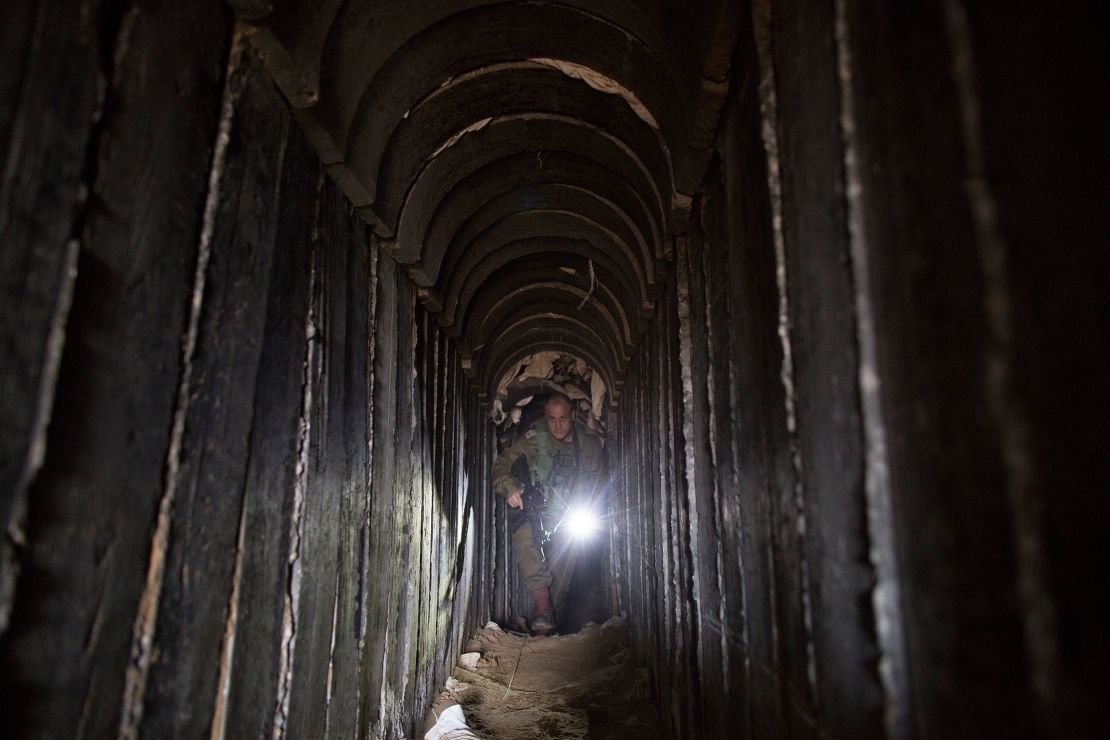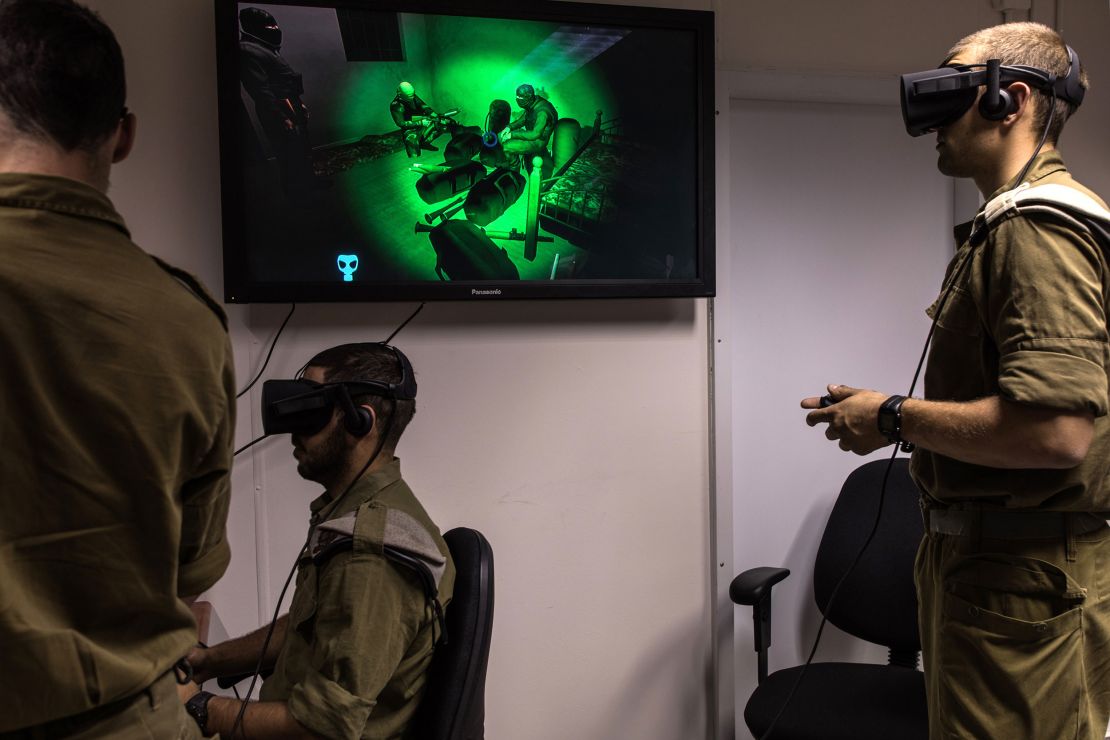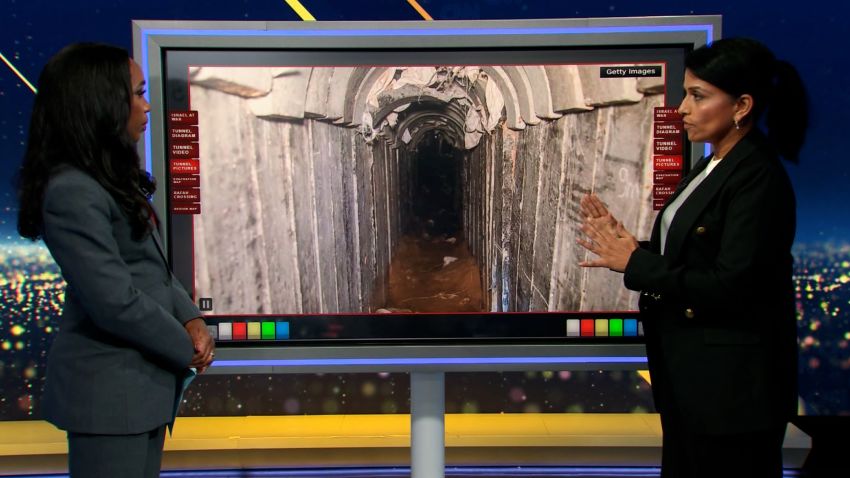The myriad tunnels under Gaza are best known as passageways used to smuggle goods from Egypt and launch attacks into Israel.
But there exists a second underground network that the Israel Defense Forces (IDF) colloquially refer to as the “Gaza metro.” It’s a vast labyrinth of tunnels, by some accounts several kilometers underground, used to transport people and goods; to store rockets and ammunition caches; and house Hamas command and control centers, all away from the prying eyes of the IDF’s aircraft and surveillance drones.
Hamas in 2021 claimed to have built 500 kilometers (311 miles) worth of tunnels under Gaza, though it is unclear if that figure was accurate or posturing. If true, Hamas’ underground tunnels would be a little less than half the length of the New York City subway system.
“It’s a very intricate, very large – huge – network of tunnels on a rather small piece of territory,” said Daphne Richemond-Barak, a professor at Israel’s Reichman University and expert on underground warfare.
It’s unclear how much the tunnel network would have cost Hamas, which governs the impoverished coastal strip. The figure is likely significant, both in terms of manpower and capital.

Gaza has been under a land, sea and air blockade by Israel, as well as a land blockade by Egypt, since 2007 and is not believed to possess the type of massive machinery typically used to build tunnels deep underground. Experts say that diggers using basic tools likely burrowed deep underground to dig the network, which is wired with electricity and reinforced by concrete. Israel has long accused Hamas of diverting concrete meant for civilian and humanitarian purposes toward the construction of tunnels.
Hamas’ critics also say that the group’s massive expenditures on tunnels could have instead paid for civilian bomb shelters or early warning networks like those across the border in Israel.
The asymmetric advantage
Tunnels have been an attractive tool of warfare since medieval times. Today they offer militant groups like Hamas an edge in asymmetric warfare, negating some of the technological advantages of a more advanced military like the IDF.
What makes Hamas tunnels different from those of al Qaeda in the mountains of Afghanistan or the Viet Cong in the jungles of Southeast Asia is that it has constructed a subterranean network below one of the most densely populated areas on the planet. Nearly 2 million people live in the 88 square miles that make up Gaza City.
“It’s always difficult to deal with tunnels, don’t get me wrong, in any context, even when they are in a mountainous area, but when they are urban area, then everything is more complicated – the tactical aspects, strategic aspects, the operational aspects, and of course, the protection that you want to ensure for the civilian population,” said Richemond-Barak, who is also a senior fellow at the Lieber Institute for Law and Land Warfare and the Modern War Institute at West Point.

Since the October 7 terror attack in Israel in which at least 1,400 people were killed, according to Israeli authorities, the IDF has repeatedly alleged that Hamas is hiding inside these passages “underneath houses and inside buildings populated with innocent Gazan civilians,” effectively turning them into human shields. Israeli airstrikes on Gaza have killed more than 7,000 people, according to Palestinian health officials, drawn from sources in the Hamas-controlled enclave.
One of the few hostages released by Hamas described what it is was like to be kidnapped by gunmen and taken into a tunnel system in Gaza.
Yocheved Lifshitz, a frail 85-year-old grandmother, said she was forced to walk on wet ground and descended into an underground tunnel system – which she likened to a spiderweb – where she was greeted by “people who told us we believe in the Quran” and promised “not to harm” her and her fellow hostages.
She added that she and other hostages, separated into groups, slept on mattresses on the floor of the tunnels.
The IDF is expected to go after the network in its forthcoming ground incursion into Gaza, as it has in recent years gone to extreme lengths to eliminate Hamas’ tunnels. Israel launched a ground assault on Gaza in 2014 to try and eliminate the underground passages.
Israel has repeatedly warned about 1.1 million people living in Gaza to move south ahead of its likely operation, according to the United Nations. Critics said such an order was impossible to carry out on short notice in the middle of a war zone. The top UN human rights official said the evacuation call “defies the rules of war and basic humanity.”
Moving civilians out of Gaza City would help make it safer to eliminate tunnels, but such operations will be dangerous, Richemond-Barak said.
This week the Israeli military expanded its ground operation, pounding sites in Gaza. It said 150 underground targets were hit.
The IDF can either render the tunnels temporarily unusable or destroy them. According to Richemond-Barak, bombing the underground passages is typically the most efficient way to eliminate them, but such strikes can impact civilians.
What is clear is that technology alone won’t be enough to stop the subterranean threat.
Israel spent billions of dollars attempting to secure the border with a smart system that boasts advanced sensors and subterranean walls, yet Hamas was still able to launch its October 7 assault by land, air and sea.
Richemond-Barak said a holistic approach is required, one that employs visual intelligence, border monitoring and even asking civilians to keep an eye out for anything suspect.
“There is no foolproof solution to deal with a tunnel threat,” Richemond-Barak said. “There’s no Iron Dome for tunnels.”
This story has been updated with additional developments.
